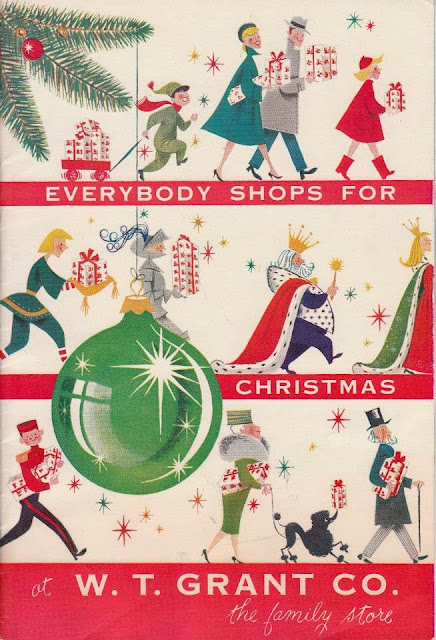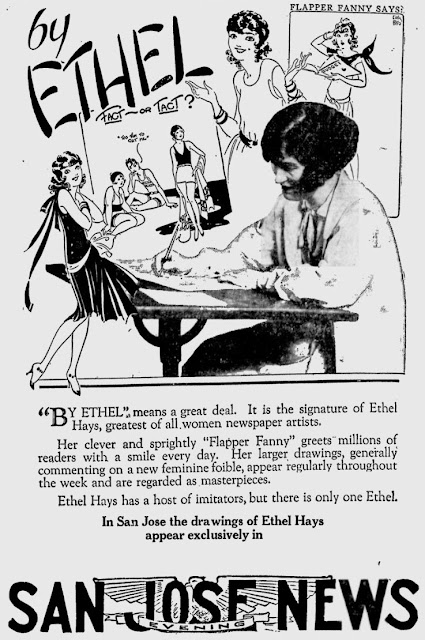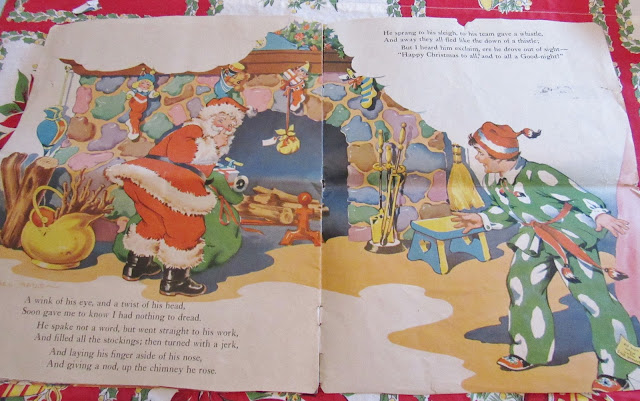Program for Disney's Snow White Premiere: December 21, 1937
It was a very important moment in the history of film: the premiere of the first feature-length animated film. Walt Disney's Snow White and the Seven Dwarfs was first screened the night of December 21, 1937, at the Carthay Circle Theatre in Los Angeles.
Someone -- I don't know who -- went to the event and brought home a copy of the program for that night.
I found it at an estate sale the other day. It was stacked in a dusty garage with a bunch of old magazines.
This program was a witness to film history, so I was very careful as I handled it to take pictures to show you here.
The program is in good shape for being over 75 years old. The inside centerfold is printed on silver foil:
Other pages provide facts about the film, interspersed with congratulatory ads from local businesses and others in the film industry.
Walt Disney wrote a note of thanks to his staff.
A massive marketing campaign accompanied the debut of the film. I. Magnin & Co.'s ad in the opening night program showcased Cartier's 14k gold Snow White bracelet, a narrow gold link chain with charms representing Snow White and all seven dwarfs. Cost: $100. Suggestion: Christmas gift.
The program gave the history of the story of Snow White, a "paragon of girlish virtue" in Disney's version of the tale.
There were several ads for local businesses. This one is for the Melody Lane, "the most beautiful cafe' in Los Angeles."
There was a page in the program devoted to the music of Snow White and the Seven Dwarfs.
And more congratulatory ads from local businesses. It must have been tricky to print on silver foil.
Technicolor took out a full-page ad.
I wasn't able to find out the name of the person who went to the premiere of Snow White, on that December night so long ago. Tickets were notoriously hard to come by. Did the original owner of the program work for Walt Disney, or know someone who did? She or he must have been aware, at some level, that the premiere was making history.
In retrospect, we know that making Snow White was a massive gamble for Walt Disney. There had never been a feature-length animated film before this one. It cost a fortune to make; production took three years and the talents of 750 artists. Hollywood gossips called it "Disney's folly." America was still reeling from the shock of the Great Depression. Would people pay to see a full-length cartoon? Would the dark themes in the film be considered too frightening for children to see?
The build-up to the premiere was intense. The 1500 tickets sold out quickly; the audience included Hollywood luminaries from Shirley Temple to Cary Grant to Charlie Chaplin. Several hundred Disney animators who worked on the film bought tickets so they could see how the finished product came out.
It was reported that more than 3o,000 people who couldn't get tickets for the premiere packed the streets anyway, just to be part of the event and get tickets for later showings. Bleachers were set up to accommodate them, and extra police were brought in for security.
The premiere of Snow White was accompanied by a number of special exhibits and activities. One was the outdoor "Dwarfland" diorama created along Wilshire Boulevard, a couple of blocks from the Carthay Circle Theatre. It featured actors dressed as the Seven Dwarfs, complete with cottage, a working water wheel, and diamond mine.
Here's a YouTube video clip of the premiere event:
https://www.youtube.com/watch?v=ILBw0sz0Ahc
There are several blogs dedicated to All Vintage Things Disney. Perhaps the most comprehensive source for information on the premiere of Snow White is the blog Filmic-Light. Here's its report, complete with lots of pictures, on the premiere:
http://filmic-light.blogspot.com/2012/12/75th-anniversary-of-snow-whites-world.html
Snow White and the Seven Dwarfs lived up to, even exceeded, its hype. The History.com website summarizes:
The stunning success of “Snow White” marked a turning point in the career of Walt Disney, and established him among the world’s most celebrated filmmakers. The quality of its animation, voiceover work and musical score set a high standard for all future animated features made by Disney or any other studio.
And the old program I found at an estate sale, was there at the premiere.
(Yes, I know. This original program needs to be in the hands of a real collector of vintage Disney. I'm sure one will come forward, once I post this piece on the blog.)
_________________________________________
Additional resources:
Filmic-Light (above) also has a Facebook page that features Snow White memorabilia.
Here are more web pages related to the premiere of "Snow White and the Seven Dwarfs:"
http://vintagedisneymemorabilia.blogspot.com/search/label/Snow%20White
http://decidedlydisney.blogspot.co.uk/2012/12/snow-at-christmas.html
The Disney Family Museum website tells about the opening:
http://www.waltdisney.org/storyboard/snow-white-and-seven-dwarfs-opening
As does the official Disneyland blog:
http://disneyparks.disney.go.com/blog/2011/12/opening-night-1937-snow-white-and-the-seven-dwarfs-premieres-at-carthay-circle-theatre/
Someone -- I don't know who -- went to the event and brought home a copy of the program for that night.
I found it at an estate sale the other day. It was stacked in a dusty garage with a bunch of old magazines.
This program was a witness to film history, so I was very careful as I handled it to take pictures to show you here.
The program is in good shape for being over 75 years old. The inside centerfold is printed on silver foil:
Other pages provide facts about the film, interspersed with congratulatory ads from local businesses and others in the film industry.
Walt Disney wrote a note of thanks to his staff.
A massive marketing campaign accompanied the debut of the film. I. Magnin & Co.'s ad in the opening night program showcased Cartier's 14k gold Snow White bracelet, a narrow gold link chain with charms representing Snow White and all seven dwarfs. Cost: $100. Suggestion: Christmas gift.
The program gave the history of the story of Snow White, a "paragon of girlish virtue" in Disney's version of the tale.
There were several ads for local businesses. This one is for the Melody Lane, "the most beautiful cafe' in Los Angeles."
There was a page in the program devoted to the music of Snow White and the Seven Dwarfs.
And more congratulatory ads from local businesses. It must have been tricky to print on silver foil.
In retrospect, we know that making Snow White was a massive gamble for Walt Disney. There had never been a feature-length animated film before this one. It cost a fortune to make; production took three years and the talents of 750 artists. Hollywood gossips called it "Disney's folly." America was still reeling from the shock of the Great Depression. Would people pay to see a full-length cartoon? Would the dark themes in the film be considered too frightening for children to see?
The build-up to the premiere was intense. The 1500 tickets sold out quickly; the audience included Hollywood luminaries from Shirley Temple to Cary Grant to Charlie Chaplin. Several hundred Disney animators who worked on the film bought tickets so they could see how the finished product came out.
It was reported that more than 3o,000 people who couldn't get tickets for the premiere packed the streets anyway, just to be part of the event and get tickets for later showings. Bleachers were set up to accommodate them, and extra police were brought in for security.
The premiere of Snow White was accompanied by a number of special exhibits and activities. One was the outdoor "Dwarfland" diorama created along Wilshire Boulevard, a couple of blocks from the Carthay Circle Theatre. It featured actors dressed as the Seven Dwarfs, complete with cottage, a working water wheel, and diamond mine.
Here's a YouTube video clip of the premiere event:
https://www.youtube.com/watch?v=ILBw0sz0Ahc
There are several blogs dedicated to All Vintage Things Disney. Perhaps the most comprehensive source for information on the premiere of Snow White is the blog Filmic-Light. Here's its report, complete with lots of pictures, on the premiere:
http://filmic-light.blogspot.com/2012/12/75th-anniversary-of-snow-whites-world.html
Snow White and the Seven Dwarfs lived up to, even exceeded, its hype. The History.com website summarizes:
The stunning success of “Snow White” marked a turning point in the career of Walt Disney, and established him among the world’s most celebrated filmmakers. The quality of its animation, voiceover work and musical score set a high standard for all future animated features made by Disney or any other studio.
And the old program I found at an estate sale, was there at the premiere.
(Yes, I know. This original program needs to be in the hands of a real collector of vintage Disney. I'm sure one will come forward, once I post this piece on the blog.)
_________________________________________
Additional resources:
Filmic-Light (above) also has a Facebook page that features Snow White memorabilia.
Here are more web pages related to the premiere of "Snow White and the Seven Dwarfs:"
http://vintagedisneymemorabilia.blogspot.com/search/label/Snow%20White
The Disney Family Museum website tells about the opening:
http://www.waltdisney.org/storyboard/snow-white-and-seven-dwarfs-opening
As does the official Disneyland blog:
http://disneyparks.disney.go.com/blog/2011/12/opening-night-1937-snow-white-and-the-seven-dwarfs-premieres-at-carthay-circle-theatre/
Sidebar: I remember that my mother did a dandy impersonation of Snow White singing, "I'm wishing {echo: I'm wishing} / For the one I love...." and "Someday My Prince Will Come." Mom was a little girl when the film first came out, so she had plenty of time to practice her coloratura voice before her kids were born. "Whistle While You Work" and "Hi-Ho" were easier to remember, though.
.jpg)














.jpg)







.jpg)


.jpg)

.jpg)
.jpg)
.jpg)
.jpg)
.jpg)
.jpg)
.jpg)

























